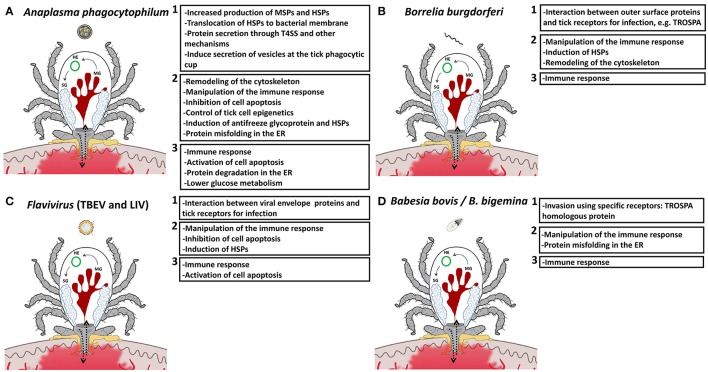Figure 2.
Tick-pathogen molecular interactions. (A) A. phagocytophilum (B) B. burgdorferi s.l., (C) TBEV, and (D) B. bovis/B. bigemina activate mechanisms (panel 1) and manipulate tick protective responses and other biological processes in order to facilitate infection (panel 2), while ticks respond to limit pathogen infection and preserve feeding fitness and vector competence for survival of both ticks and pathogens (panel 3). MG, midgut; HE, hemocyte; SG, salivary gland; MSPs, major surface proteins; HSPs, heat shock proteins; ER, endoplasmic reticulum.

